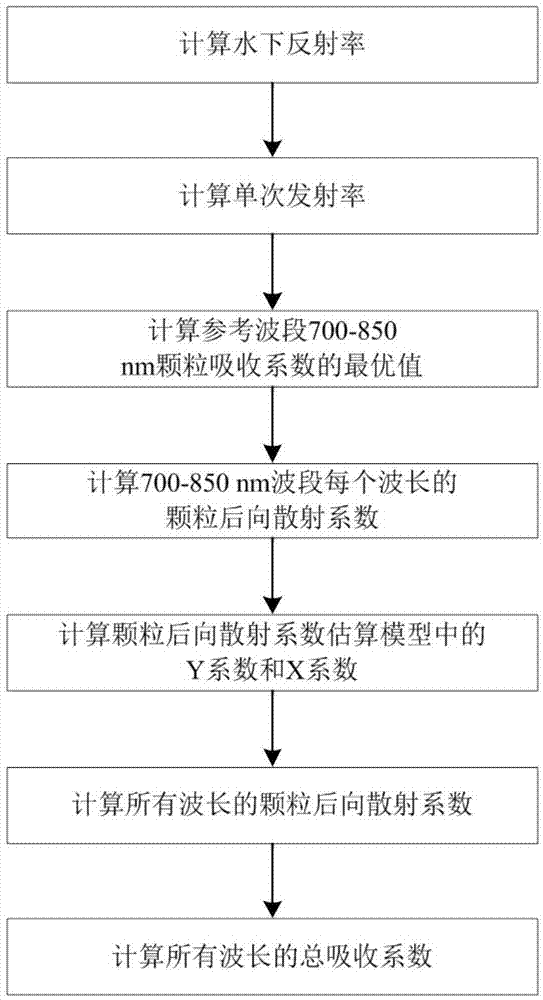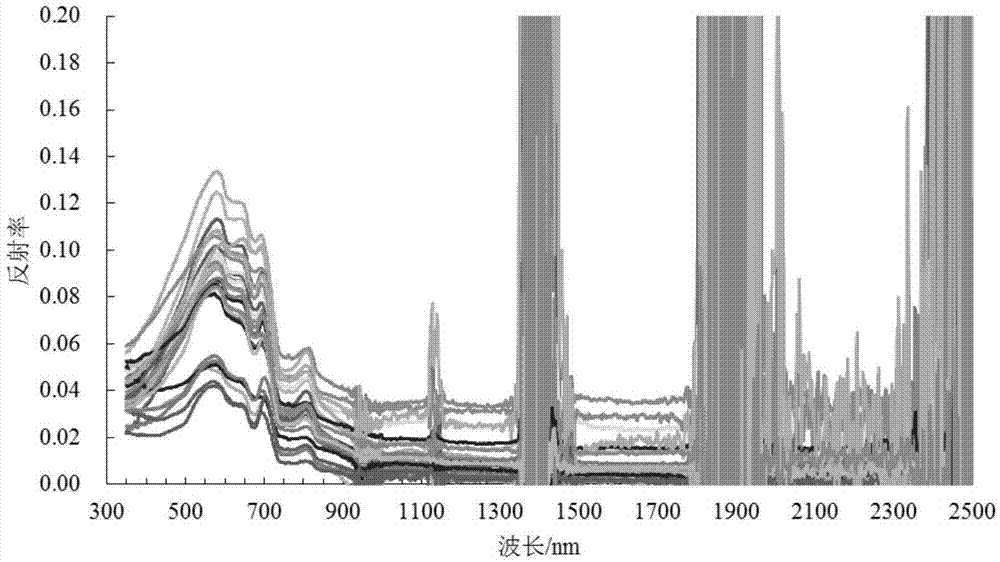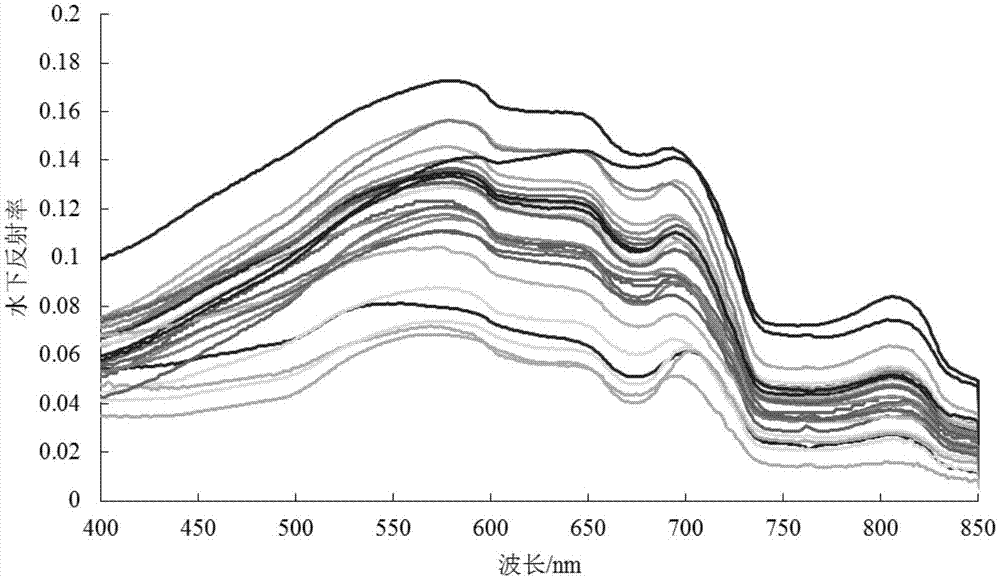Water body inherent optical quantity inversion method based on backscattering coefficient linear constraint
A backscattering coefficient and linear constraint technology, applied in the field of environmental remote sensing and water environment monitoring, can solve the problems of inability to adapt to the complex and changeable inland turbid water
- Summary
- Abstract
- Description
- Claims
- Application Information
AI Technical Summary
Problems solved by technology
Method used
Image
Examples
Embodiment Construction
[0065] The present invention will be further described below in conjunction with the drawings.
[0066] figure 1 It is a technical flow chart of the inversion method for the intrinsic optical quantity of water body with linear constraints of the backscattering coefficient. According to the above procedure, the inversion of intrinsic optical quantity of water body is carried out.
[0067] (1) Calculate the underwater reflectivity.
[0068] figure 2 It is the out-of-water reflectance of the water body measured in the field. The wavelength range is 350-2500nm. There are 29 sample curves in total. First, calculate the internal reflectance of the water body in the 400-900nm band. The calculation formula is:
[0069] R r s c ( λ ) = R r s ( λ ) - R r s ( 1600 - 1700 ) ,
[0070] Among them, λ is the wavelength, the superscript c stands for after correction, and the subscript rs stands for remote sensing. Is the corrected...
PUM
 Login to View More
Login to View More Abstract
Description
Claims
Application Information
 Login to View More
Login to View More - R&D Engineer
- R&D Manager
- IP Professional
- Industry Leading Data Capabilities
- Powerful AI technology
- Patent DNA Extraction
Browse by: Latest US Patents, China's latest patents, Technical Efficacy Thesaurus, Application Domain, Technology Topic, Popular Technical Reports.
© 2024 PatSnap. All rights reserved.Legal|Privacy policy|Modern Slavery Act Transparency Statement|Sitemap|About US| Contact US: help@patsnap.com










